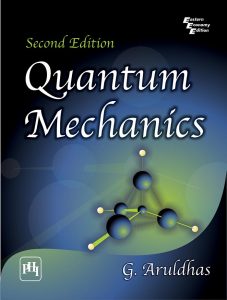Let’s Know What’s There In The Book
QUANTUM MECHANICS, Second Edition

The Book
The Second Edition of this concise and compact text offers students a thorough understanding of the basic principles of quantum mechanics and their applications to various physical and chemical problems.
This thoroughly class-tested material aims to bridge the gap between the books which give highly theoretical treatments and the ones which present only the descriptive accounts of quantum mechanics. Every effort has been made to make the book explanatory, exhaustive and student friendly. The text focuses its attention on problem-solving to accelerate the student’s grasp of the basic concepts and their applications.
What is new to this Edition:
- · Includes new chapters on Field Quantization and Chemical Bonding.
- · Provides new sections on Rayleigh Scattering and Raman Scattering.
- · Offers additional worked examples and problems illustrating the various concepts involved.
- · This textbook is designed as a textbook for postgraduate and advanced undergraduate courses in physics and chemistry.
- · Solutions Manual containing the solutions to chapter-end exercises is available for instructors.
The Author
(Late) G. ARULDHAS, PhD, was Professor and Head of Physics Department, and Dean, Faculty of Science, University of Kerala. With over four decades of teaching experience at the PG level.
Dr. Aruldhas served as CSIR Emeritus Scientist and Director, University Institute of Technology, Kerala University. He published about 145 research papers in various national and international journals. Dr. Aruldhas authored four other books which were published/are being published by PHI Learning.
The Contents
Preface
Preface to the First Edition
1. Origin of the Quantum Theory
2. Wave Mechanical Concepts
3. General Formalism of Quantum Mechanics
4. One-Dimensional Energy Eigenvalue Problems
5. Three-Dimensional Energy Eigenvalue Problems
6. Heisenberg Method
7. Symmetry and Conservation Laws
8. Angular Momentum
9. Time-Independent Perturbation Theory
10. The Variation Method
11. WKB Approximation
12. Time-Dependent Perturbation Theory
13. Many Electron Atoms
14. Scattering
15. Relativistic Wave Equations
16. Elements of Field Quantization
17. Chemical Bonding
Appendices • Bibliography
Answers to Problems
Index
For more click https://www.phindia.com/Books/BookDetail/9788120336353/quantum-mechanics-aruldhas